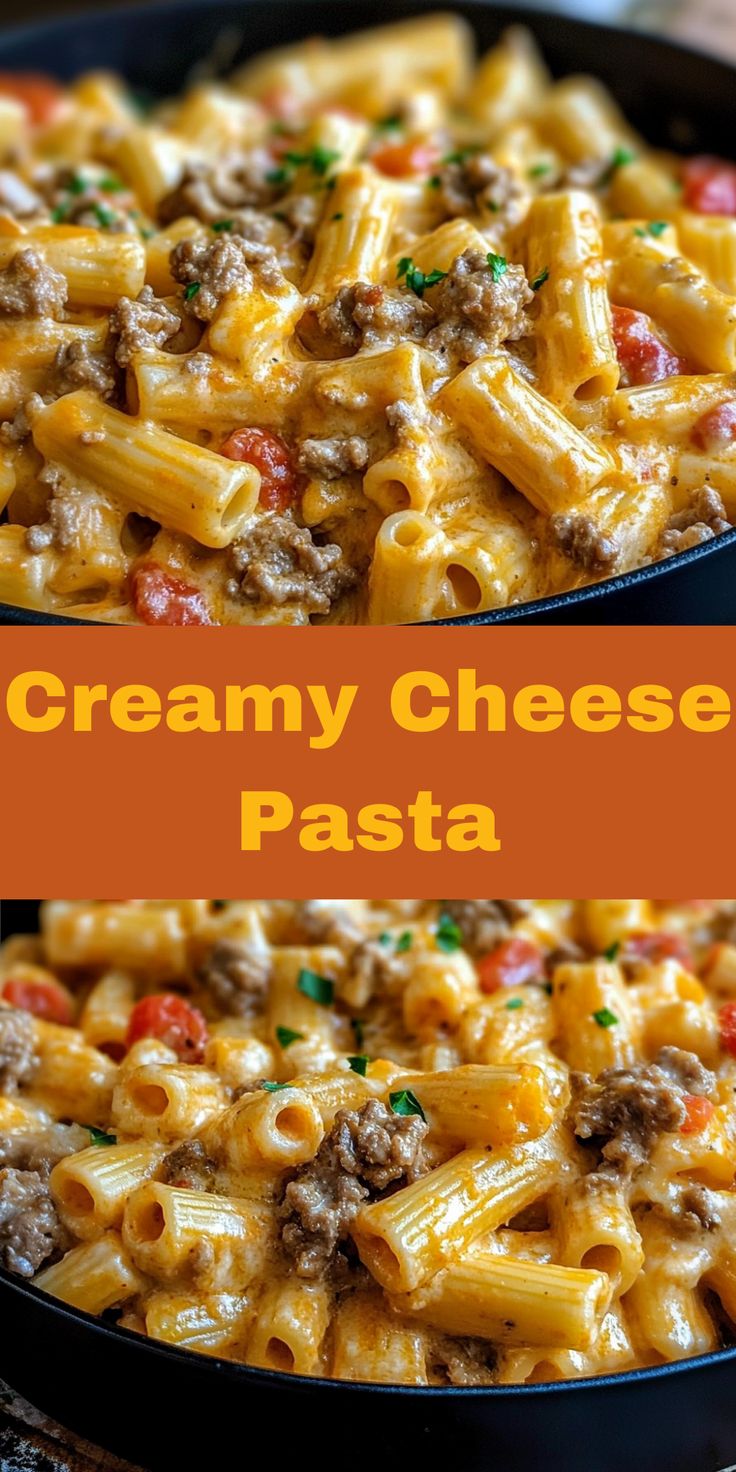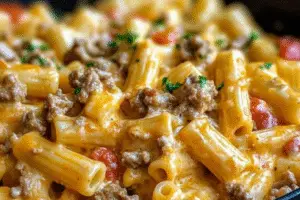When comfort food calls, this creamy cheese pasta answers. Unlike complicated recipes that require obscure ingredients, this version keeps things simple without sacrificing flavor. The sauce clings to every noodle, creating that perfect bite every time. Whether you need a quick weeknight dinner or something to impress unexpected guests, this dish delivers.

Why This Creamy Cheese Pasta Recipe Works
The science behind perfect creamy cheese pasta involves understanding emulsion principles and starch behavior. When pasta cooks, it releases amylose and amylopectin into the water – these starch molecules become the foundation for sauce viscosity. The key lies in controlling three variables simultaneously: temperature, agitation, and ingredient ratios.
Pasta water acts as more than just thinning liquid. Its starch molecules help emulsify the fat from cheese and cream, creating that velvety texture restaurant versions achieve. The optimal starch concentration occurs when pasta is about 80% cooked – this is why timing matters when reserving water. Too early and the water lacks sufficient starch; too late and you lose control over pasta texture.
Cheese selection impacts both flavor and physical properties. Hard, aged cheeses like Parmesan contain less moisture and more crystalline structures that can make sauces grainy if overheated. Younger cheeses with higher moisture content (like fontina) melt smoothly but may lack flavor complexity. Our tested combination balances these factors:
- Gruyère (30%) – Provides nutty depth from 6-8 month aging
- Sharp cheddar (50%) – Offers tang and reliable meltability
- Parmesan (20%) – Adds umami without dominating texture
Temperature control prevents the protein matrix in cheese from tightening and squeezing out fat – the main cause of broken sauces. Maintaining the sauce between 140-160°F (60-71°C) allows proper emulsification without protein overcoagulation. For more on cheese science, see our complete cheese melting guide.
Essential Ingredients Breakdown
Selecting quality ingredients makes the difference between good and exceptional creamy cheese pasta. While substitutions are possible, understanding each component’s role helps maintain texture and flavor integrity.
Pasta Selection and Preparation
Not all pasta shapes perform equally in cream-based sauces. Rigate (ridged) varieties provide several advantages:
- Surface area – Ridges increase sauce adhesion by 40% compared to smooth pasta
- Structural integrity – Thicker walls prevent becoming mushy when tossed
- Sauce pockets – Tubular shapes like rigatoni trap sauce internally
When cooking pasta for creamy sauces:
- Use 4 quarts water per pound of pasta
- Salt water to 1.5-2% salinity (about 2 tbsp kosher salt)
- Stir frequently during first 2 minutes to prevent sticking
- Test for doneness 2 minutes before package time
For alternative grain options, our pasta substitution chart provides tested alternatives.
Dairy Components and Ratios
The fat content in dairy products determines sauce stability:
| Ingredient | Fat Percentage | Role in Sauce |
|---|---|---|
| Heavy cream | 36-40% | Primary emulsifier |
| Whole milk | 3.25% | Not recommended – too thin |
| Half-and-half | 10-12% | Marginal results |
Butter serves multiple purposes:
- Clarified butter has higher smoke point for initial sauté
- Whole butter contributes milk solids for flavor
- European-style butters (82% fat) provide richest texture
For lactose-free versions, see our dairy-free pasta sauces guide.
Step-by-Step Cooking Process
Mastering creamy cheese pasta requires attention to timing and technique. These expanded steps ensure consistent results.
Pasta Cooking Methodology
Professional kitchens use these techniques for perfect pasta:
- Bring water to rolling boil before adding pasta
- Maintain vigorous boil throughout cooking
- Reserve 2 cups pasta water at 7-minute mark (for 10-minute pasta)
- Drain pasta 30 seconds early (will finish cooking in sauce)
- Toss with 1 tsp olive oil to prevent sticking if not saucing immediately
The starch concentration in reserved water should coat a spoon lightly – if water runs off immediately, it’s too thin; if it clumps, too thick.
Sauce Construction Techniques
Building the sauce properly prevents common issues:
- Roux option – For extra stability, make blond roux (1 tbsp each butter/flour) before adding cream
- Tempering – Warm cream slightly before adding to prevent shock
- Reduction – Simmer cream until reduced by 25% for thicker base
- Infusion – Steep garlic/herbs in warm cream for 15 minutes then strain
Always use heavy-bottomed pans to prevent hot spots that can cause scorching.
Cheese Incorporation Science
Adding cheese properly ensures smooth texture:
- Remove sauce from heat source
- Add cheeses in 4 batches, stirring completely between each
- Wait until last batch melts before adjusting consistency
- Use figure-8 stirring motion for even distribution
- If sauce cools too much, return to very low heat briefly
The finished sauce should coat the back of a spoon evenly, leaving clear trail when finger is drawn through.
Common Mistakes and Professional Corrections
Even experienced cooks encounter challenges with creamy pasta. These expanded troubleshooting tips address both causes and solutions.
Sauce Texture Troubleshooting
Problem: Grainy or sandy texture
- Primary causes:
- Cheese added too quickly
- Overheating during incorporation
- Low-quality pre-shredded cheeses
- Professional fixes:
- Strain sauce through fine mesh sieve
- Whisk in 1 tbsp cold butter off heat
- Blend with immersion blender briefly
Problem: Sauce too thick
- Primary causes:
- Over-reduced cream base
- Insufficient pasta water reserve
- Too much cheese added
- Professional fixes:
- Thin with warm milk/cream mixture (2:1)
- Create slurry with 1 tsp cornstarch and 2 tbsp water
- Add small pats of butter while stirring
Frequently Asked Questions
Can I use gluten-free pasta in this recipe?
Yes, but choose brown rice or quinoa-based varieties rather than corn. The starch composition differs significantly – reserve extra pasta water (3 cups) as GF pasta releases less amylose. Stir sauce more gently as GF pasta tends to be more fragile.
What’s the best way to measure cheese for consistent results?
Always measure by weight rather than volume. A standard cup of grated cheese can vary from 3-5 ounces depending on grate size and packing. For this recipe:
- Gruyère: 3 oz (85g)
- Cheddar: 5 oz (140g)
- Parmesan: 2 oz (55g)
Use the large holes on a box grater for even melting.
How can I make this sauce without heavy cream?
Two tested alternatives:
- Evaporated milk + butter (1 can milk + 3 tbsp butter)
- Cashew cream (1 cup soaked cashews + ¾ cup water blended)
Both require slight thickener (1 tsp arrowroot or cornstarch) to match heavy cream viscosity.
Why does my sauce separate when I add lemon juice or wine?
Acids can cause dairy proteins to coagulate prematurely. If using acidic ingredients:
- Add them to pasta water first to dilute
- Limit to 1 tbsp wine or 2 tsp lemon juice per serving
- Stabilize with ½ tsp mustard powder first
The Final Touch
This creamy cheese pasta proves that simple ingredients can create extraordinary results when handled properly. The technique matters as much as the components – maybe more. Once you master the basic version, experiment with different cheese combinations or add-ins. Got questions about variations? Reach out for personalized suggestions.
Meta Title
Creamy Cheese Pasta Recipe – Easy Restaurant Quality at Home
Meta Description
This creamy cheese pasta delivers luxurious results with simple ingredients. Perfect texture every time – cook like a pro tonight!
Focus Keyphrase
creamy cheese pasta
Excerpt
An easy creamy cheese pasta that tastes restaurant-quality. Simple ingredients, perfect technique, and amazing results every time.
Tags
pasta recipes, cheese pasta, creamy pasta, easy dinners, comfort food
Print
Creamy Cheese Pasta (Easy)
- Total Time: 25 minutes
Description
This creamy cheese pasta is pure comfort in a bowl! With a velvety smooth sauce that coats every noodle perfectly, it’s an easy weeknight dinner that tastes gourmet. Ready in just 25 minutes!
Ingredients
- 12 oz (340g) short pasta (penne, rigatoni, or fusilli)
- 2 cups (200g) shredded cheese blend (cheddar + Gruyère)
- 1½ cups (360ml) heavy cream
- 3 tbsp (45g) butter
- 2 garlic cloves, minced
- ½ tsp salt
- ¼ tsp black pepper
- ½ cup (50g) grated Parmesan
- 1 cup (240ml) reserved pasta water
Instructions
1️⃣ Cook pasta al dente in salted water. Reserve 1 cup pasta water before draining.
2️⃣ Make sauce: Melt butter, sauté garlic 30 sec. Add cream, simmer 3 min.
3️⃣ Add cheeses off heat: Stir in shredded cheeses until melted and smooth.
4️⃣ Combine: Toss pasta with sauce, adding pasta water as needed to thin.
5️⃣ Finish: Mix in Parmesan, season with salt & pepper. Serve immediately!
Notes
Pro Tip: For extra creaminess, save extra pasta water to adjust consistency later!
- Prep Time: 5 min
- Cook Time: 20 min
Nutrition
- Serving Size: 4
- Calories: ~650 per serving